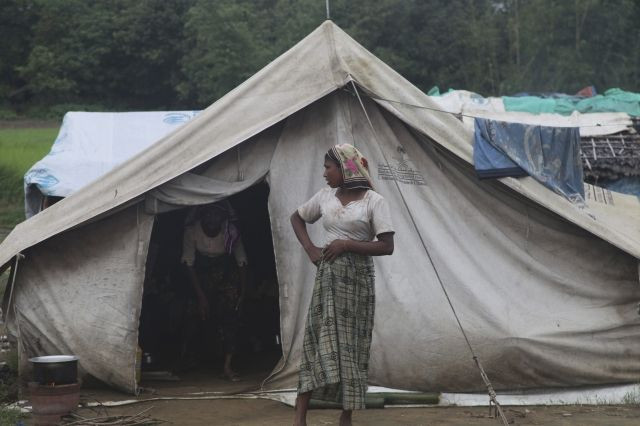Fresh Violence In Myanmar Kills 3; Monastery, Mosque Torched

Fresh sectarian violence that erupted in western Myanmar Sunday night engulfed two new districts Tuesday, leaving three people dead and destroying more than 400 houses, a monastery and a mosque, Myanmar’s authorities were reported as saying.
Government’s spokesperson for the western state of Rakhine, Myo Thant, Wednesday said that clashes between Rohingya Muslims and ethnic Rakhine Buddhists had spread to the townships of Kyaukphyu and Myebon, pushing the total number of townships affected by the new wave of violence to four, the Associated Press reported.
One Buddhist man and two Muslim women were killed in the fresh bout of violence while the authorities imposed a dawn-to-dusk curfew, media reported.
The Myanmar government declared a state of emergency in Rakhine State June 10, a week after the outbreak of communal sectarian violence. Remote Rakhine is an area known for incidents of sectarian violence between the Buddhist residents and the Muslim minority.
Communal tensions persisted, albeit less violent, in western Myanmar several weeks into the declaration of the state of emergency even as targeted attacks and human rights violations by the security forces against the minority community of the Rohingya and other Muslims increased, according to human rights watchdogs.
The fresh wave of violence, which began in Minbyar and Mrauk-U districts, both located north of the regional capital, Sittwe, is the worst in the region since the beginning of the unrest in June.
Myanmar's Border Security Force (Nasaka), the army and the police had been conducting massive sweeps in the area, leading to the arrest of hundreds of people, some of whom were subjected to ill-treatment, said Amnesty International in a report published July 20.
The violence subsided two weeks after the declaration of emergency, during which at least 78 people were killed and thousands of homes belonging to both communities were torched, according to a report by Myanmar's National Human Rights Commission published July 11. Unofficial estimates of casualties exceeded 100, Amnesty said.
Buddhists comprise 89 percent of Myanmar's population while Muslims represent four percent. The Muslim minority consists of the Rohingya people and the descendents of Muslim immigrants from neighboring India, Bangladesh, China and early Arab and Persian settlers.
© Copyright IBTimes 2025. All rights reserved.






















